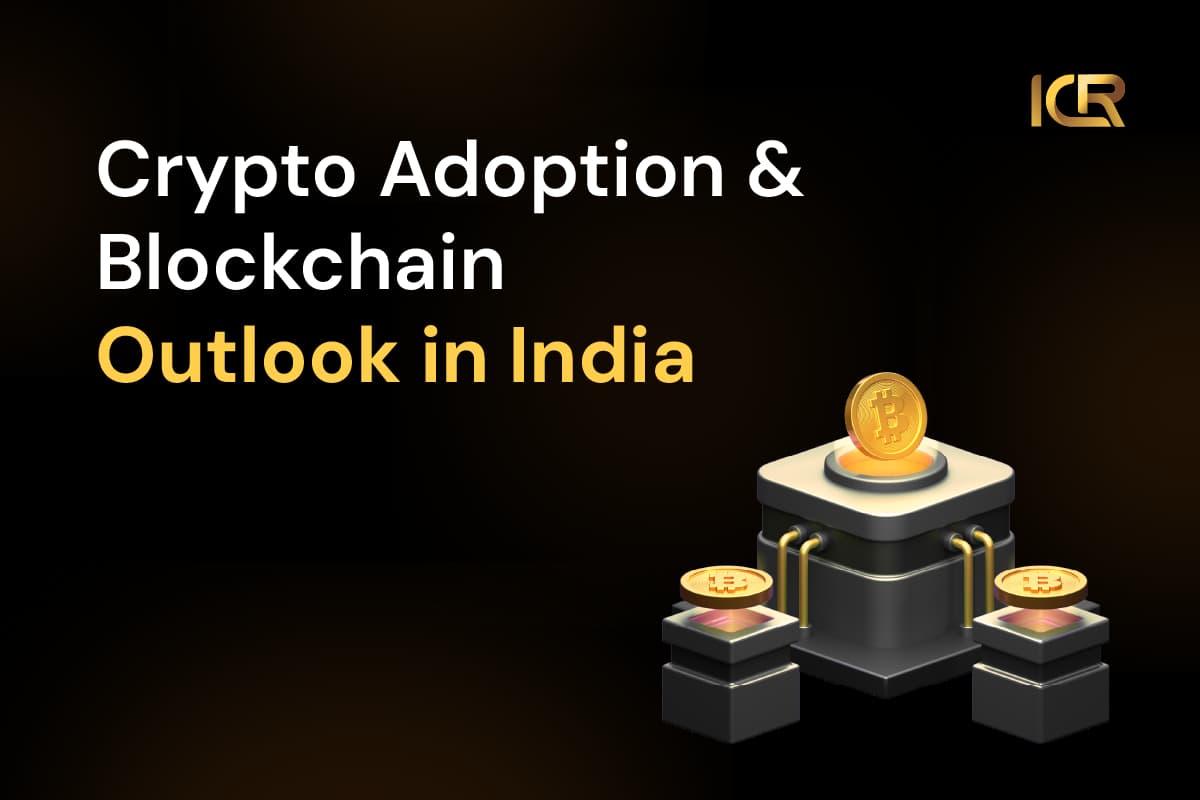May 26, 2025
4 min read

India’s engagement with cryptocurrencies and blockchain technology has seen rapid evolution, influenced by technological advancement and changing market dynamics. The Indian crypto space now depends on a few key factors like user adoption, the tax policies and the regulatory frameworks implemented by the government. To highlight India’s changing digital‑asset sector, this overview looks at adoption, the tax system, regulations, and several notable uses of blockchain in India.
India’s crypto adoption is advancing steadily and this advancement is due to the tech‑savvy youth and better digital infrastructure in India. The Indian crypto market is projected to reach USD 6.4 billion and has 107 million estimated users in 2025, with a user penetration rate (percentage of population owing cryptocurrency) of 7.35 %. India also ranked first in the Chainalysis Global Crypto Adoption Index consequently over the last 2 years, leading in both on‑chain value and retail transaction value on centralised platforms weighted by GDP per capita on a Purchasing Power Parity (PPP) adjusted basis.
TOP COUNTRIES BY GLOBAL CRYPTO ADOPTION INDEX
| RANK | 2022 | 2023 | 2024 |
| 1 | Vietnam | India | India |
| 2 | Philippines | Nigeria | Nigeria |
| 3 | Ukraine | Vietnam | Indonesia |
| 4 | India | United States | United States |
| 5 | United States | Ukraine | Vietnam |
Source: Chainalysis
Several factors are contributing to this momentum:
Apart from crypto, blockchain technology is being used in different sectors in India. The fact that it promotes transparency, security, and efficiency has allowed many pilot projects to be implemented.
Some notable use cases :
Use Case | Details |
| Land records | The Avalanche blockchain was used to digitise more than 700,000 land records in Dantewada, Chhattisgarh for better transparency and safety. |
| Agriculture | The government of Jharkhand used blockchain to monitor seed distribution to ensure that the seeds provided to farmers are real. |
| Healthcare | Blockchain For Impact (BFI) partnered with IIT Kanpur to launch blockchain-based health system improvements. |
| Digital identity | Soulverse has partnered with India Blockchain Alliance to transform the identity infrastructure of colleges. |
India has introduced a tax structure for cryptocurrencies, naming them as Virtual Digital Assets (VDAs) under the Income Tax Act.
Key provisions include:
Importantly, losses from VDAs cannot be offset against any other income or gains from any other crypto eg. If you sell Ethereum at a ₹5,000 loss and you make a ₹10,000 gain on Bitcoin, you still owe tax on the full ₹10,000 gain because you cannot use the ₹5,000 Ethereum loss to reduce your Bitcoin profit. They also cannot be carried forward, and related expenses (except acquisition cost) are not deductible. Industry players continue to urge the government to reduce the 30% tax rate and 1% TDS to encourage wider participation, though no such revisions were announced in the Interim Budget 2025.
As of May 2025, India hasn’t made full laws in regards to cryptocurrencies yet, leaving them in a situation where it is still a grey area. Crypto assets cannot be used to pay for things like your local ₹ which is a legal tender, but people can buy and sell crypto. This means they cannot be used for payments but are permissible for investment purposes.
The regulations regarding cryptocurrencies are not yet clear in India, and there isn’t a set anticipated timeline for the introduction of a comprehensive regulatory guideline for the virtual digital assets industry in India. International moves, like the U.S strategic crypto reserves and the G20 calling for countries to work together on crypto rules, will probably play a big role in determining how India regulates the use of cryptocurrencies.
In the absence of formal rules, people stay unsure of how things should be done. Several voices in the industry want to see a collaborative effort between different agencies to support a sustainable growth trend in the market.
India’s crypto and blockchain ecosystem in 2025 reflects a dynamic mix of progress and pending policy decisions. While the Indian crypto market is projected to reach $6.4 billion with over 107 million users, adoption is hampered by high taxes and regulatory uncertainty.
Blockchain innovation, on the other hand, is already getting applied in areas such as land governance, agriculture, healthcare, and digital identity.
Thus, high taxation and regulatory ambiguity may act as barriers to sustained adoption. The need for clearer policy frameworks remains a key concern among industry stakeholders.
India lacks a comprehensive crypto law, regulations remain a grey area, with trading allowed but subject to evolving guidelines and oversight proposals.
International associations like G20, which form frameworks and guidelines from bodies like the IMF are expected to play a significant role in shaping India’s future regulatory approach.
The lack of clear, comprehensive laws governing crypto use and compliance.
The information provided in this blog is based on publicly available information and is intended solely for personal information, awareness, and educational purposes and should not be considered as financial advice or a recommendation for investment decisions. We have attempted to provide accurate and factual information, but we cannot guarantee that the data is timely, accurate, or complete. 1 Finance Private Limited or any of its representatives will not be liable or responsible for any losses or damages incurred by the Readers as a result of this blog. Readers of this blog should rely on their own investigations and take their own professional advice.